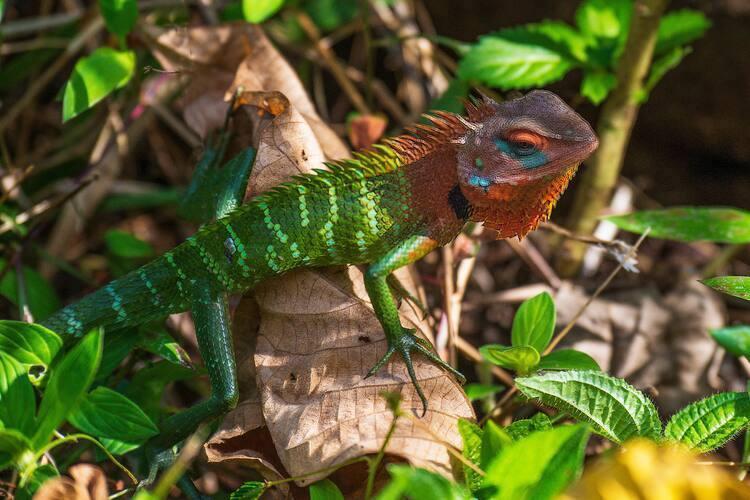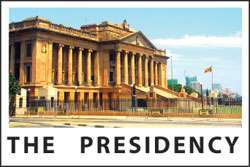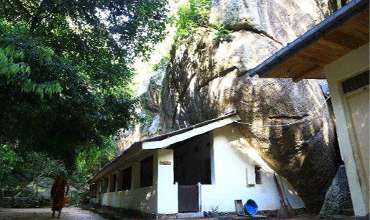The Destruction of the World Heritage Sinharaja Forest
By Somar Wijayadasa
NEW YORK (IDN) — As a former staff member of the United Nations Educational Scientific and Cultural Organization (UNESCO) from 1978 to 1995, and as a Sri Lankan, I write this OPEN LETTER to UNESCO, to the International Union for the Conservation of Forests (IUCN) and to the IUCN World Commission on Protected Areas (WCPA) to point out the plight of the Sinharaja Forest in Sri Lanka—declared as a World Heritage site.
Sri Lankans are grateful to UNESCO and its World Heritage Centre (WHC) for including six of our cultural sites and two natural sites in the World Heritage list—in accordance with the 1972 Convention Concerning the Protection of the World Cultural and Natural Heritage.

Photo: Sinharaja Forest Reserve © Ko Hon Chiu Vincent
My appeal is about the Sinharaja Forest Reserve on the World Heritage list. It was originally declared a forest reserve in 1875, designated a Biosphere Reserve in 1978, and a World Heritage Site in 1988.
UNESCO’s World Heritage Center describes it as follows: “Located in south-west Sri Lanka, Sinharaja is the country's last viable area of primary tropical rainforest. More than 60% of the trees are endemic and many of them are considered rare. There is much endemic wildlife, especially birds, but the reserve is also home to over 50% of Sri Lanka's endemic species of mammals and butterflies, as well as many kinds of insects, reptiles and rare amphibians.”
It further states that Sinharaja is afforded "the highest level of legal protection under the National Heritage and Wilderness Area Act of Sri Lanka and almost all the peripheral natural forests along the boundary have already been declared as conservation forests or reserved forests under the Forest Ordinance”.
Also, the 2020 IUCN World Heritage Conservation Outlook, assessed the Sinharaja Forest as of a "significant concern” and a “High Threat”.
Despite these commendable assurances and their significance, the Sinharaja faces destruction due to road construction, hydropower projects, illegal logging, agricultural expansions, human dwellings, mining, poaching, and illegal collection of rare and endemic species by locals and foreigners to name a few—sometimes with the connivance of politicians in power.
Many concerned environmentalists in Sri Lanka have documented, publicized, and reported these violations to authorities as they cause environmental degradation and seriously affect the conservation of Sinharaja for future generations.
Violations galore with the connivance of those in power
The Lankaweb, on 11/19/2015, in an article entitled “Destruction of World Heritage Sinharaja Exposed” described the massive damage that has been done to Sinharaja due to the construction of two illegal mini-hydro projects - in northern Sinharaja forest blocking the Kosgulana River, and the “Eli Hatha” mini-hydro project.
I wish to point out that the right-minded citizens took the gluttonous culprits of these two projects to courts but the Supreme Court (case SC/FR/57/17) dismissed the case on frivolous grounds that “the judiciary should not intervene to the duties and obligations of legislature and executive”.
People’s outcry fell on deaf ears as the then Government of Sri Lanka allowed the projects to be completed.
In 2019, the Slovak Government paid a fine of Rs 10.85 million imposed on five Slovak nationals found guilty of illegally collecting endemic animals (771 butterflies, 46 beetles and several spiders) and plant species from the Sinharaja Rainforest.
Villagers in areas surrounding the Sinharaja complain that foreigners as well as locals often engage in such activities.
Another environmental calamity that affects the Sinharaja is the widening of the Neluwa-Deniyaya road through Lankagama.
Sri Lanka’s MediaLK, on 18/11/20, in an article entitled “Anti Corruption:Truth behind Lankagama Road exposed following cabinet decision" vividly chronicled the ramifications resulting from this road project and a number of other projects such as the water diversion projects of the Gin-Nilwala rivers that entail the construction of three small reservoirs through three dams and several tunnels.
On 23/3/21, in an article entitled “Is China planning ‘Water Blackmail’ in Sri Lanka?" Sri Lankan news broadcaster NewsFirst pointed out that Sri Lanka’s Irrigation Minister Chamal Rajapaksa has said the government plans to construct two irrigation tanks (each tank spanning five acres) inside the Sinharaja forest to provide clean water to Hambantota in the far south.
These are only a minuscule of violations.
The Government ignores the public outcry
Previous governments have endeavoured to conserve Sinharaja in its pristine state.
It is on record that the previous President Maithripala Sirisena, in 2019, signed a planned proposal to quadruple the size of the protected area inside this last viable rainforest—but it was never gazetted as required to become law.
Reputable environmentalists claim that this tropical wet evergreen forest system is of considerable ecological, biological, hydrological and geological value.
Environmentalist Nisantha Gajasinghe says that over 340 species of woody plants are found in Sinharaja, 192 of which are native to the island, and that Sri Lanka is named among the 34 highest biodiversity hotspots in the world.
Gajasinghe warns that the widening of the road through Sinharaja and some illogical constructions (without proper environmental assessments) will have a long-term impact on the forest.
The Director of the Environmental Conservation Trust, Sajeewa Chamikara, said that of the 926 endemic flowering plant species in the country, 495 are recorded from Sinharaja forest.
According to the National Heritage Forest Act, Chamikara said, all activities such as deforestation, clearing of new forests and construction of roads in national heritage sites are prohibited.
Many question why Sri Lanka’s government authorities from the President down to the CEA, the Forest Department, etc., don’t understand that these projects not only cause the destruction of the Sinharaja Forest, and eventually reduce the rainforest coverage, reduce rainfall, and deplete these water resources but also further exacerbate the already threatened environment.
The Sunday Times editorial on 4/4/21 entitled “Ruining the ‘natural beauty’ of the Emerald Isle" pointed out “environmentalists and concerned citizens, especially young people from the big cities to the village hamlets are raising their collective voice, protesting the rape of the forests and the resultant damage to the environment”.
Referring to the ill-conceived projects inside Sinharaja, the Editor opined “such a proposal was even entertained in this world heritage site whose wealth of biodiversity is without question, is a sad reflection on the shortsightedness of those who, under the guise of developers, worm their way into officialdom and are able to present it as a Government initiative”.
Environmental rights are human rights
According to the United Nations, “All human beings depend on the environment in which we live. A safe, clean, healthy and sustainable environment is integral to the full enjoyment of a wide range of human rights, including the rights to life, health, food, water and sanitation”.
Since the UN Human Rights Commission recently smacked Sri Lanka with the calamitous Resolution 46/1, we should strive to ensure that the destruction of the Sinharaja forest is not added to the list as another violation of human rights.
Karl Marx wrote in 1867: “Even an entire society, a nation … are not the owners of the earth. They are simply its possessors, its beneficiaries, and have to bequeath it in an improved state to succeeding generations.”
I, hereby, humbly appeal to UNESCO’s WHC, IUCN and WCPA to establish a Joint Committee with Sri Lanka’s appropriate government bodies (Central Environment Authority, Forest Dept., Wild Life Dept., etc.,) local environmentalists and NGO’s) to prevent illegal encroachments and wanton destruction of the Sinharaja Forest, and assist the Government of Sri Lanka to protect it for our future generations.
Thank you.
Sincerely,
Somar Wijayadasa Esq, LLM.
*Somar Wijayadasa, an International lawyer who worked in UN organizations (IAEA, FAO & UNESCO since 1973), was a Delegate of UNESCO to the UN General Assembly from 1985-1995, and Representative of UNAIDS at the United Nations from 1995-2000. [IDN-InDepthNews – 08 April 2021]
Share your views on this article: comment@indepthnews.net
Photo: Sinharaja Forest Reserve © Ko Hon Chiu Vincent
IDN is the flagship agency of the Non-profit International Press Syndicate.
Visit us on Facebook and Twitter.
This article is published under the Creative Commons Attribution 4.0 International licence. You are free to share, remix, tweak and build upon it non-commercially. Please give due credit.
-
Still No Comments Posted.















Leave Comments